Setup Guide
This documentation describes how to develop the Optical See-Through display app. It allows the user to see what is shown on the smart glasses screen while still being able to see through it (without the background of the camera). Image Tracker is supported with Optical See-Through display whereas all trackers are supported with Video See-Through display. Select 'None' at Wearable Type or refer to Unity Setup Guide to develop the Video See-Through display app.
1. Set Up the Unity Development Environment
2. Install MAXST AR SDK for Unity
3. Run Sample App on Smart Glasses with Unity (Android)
4. Precautions
5. GitHub Unity Scene Example
1. Set Up Unity Development Environment
Requirements
We recommend Unity 2018 or later for the MAXST AR SDK for Unity.
To use MAXST AR SDK for Unity, you need basic knowledge of Unity development tools and Unity development.
For more information on Unity development tools, visit Unity Website.
The SDK supports the Smart Glasses devices Epson Moverio BT-300, BT-350.
2. Install MAXST AR SDK for Unity
Open the Unity project or create a new one.
Import MAXST AR SDK for Unity by double-clicking the downloaded MAXST AR SDK Package or by selecting 'Assets / Import Package / Custom Package' from the Unity Editor menu and selecting the downloaded Package.
Install ARCore (Requirement - Optional)
3. Run Sample App on Smart Glasses with Unity (Android)
To run the MAXST AR SDK sample app for Unity on Smart Glasses, follow these steps.
In Unity Editor, select 'File > Build Settings'
In Project View, add ImageTracker scene from the 'Assets > MaxsARSamples > Scenes' folder to 'Build Settings > Scenes In Build'
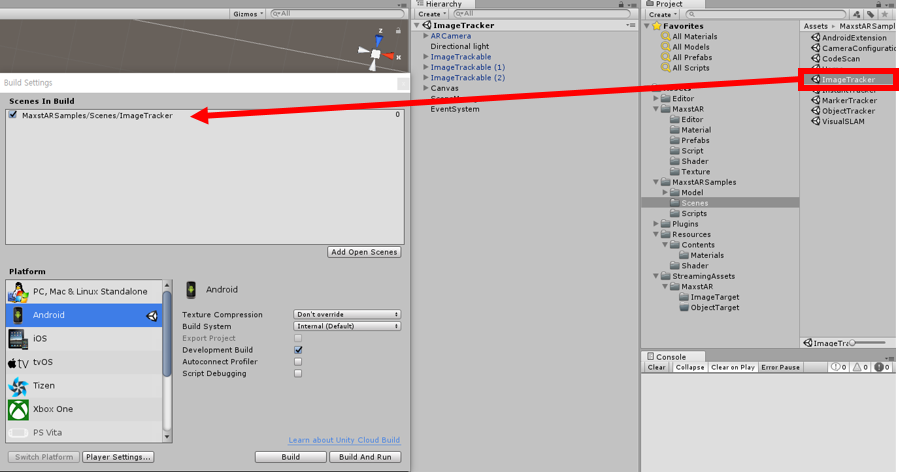
In Platform window, select Android and click the Switch Platform button.
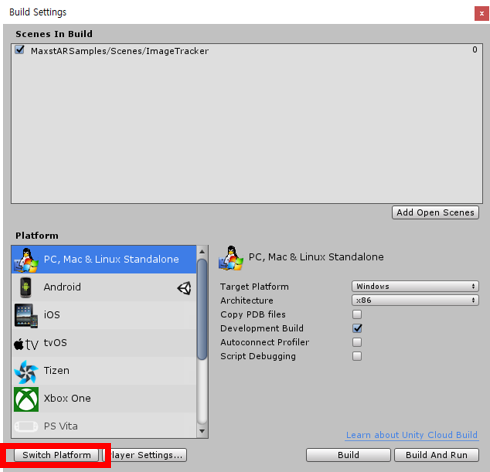
In Platform window, click the Player Settings button.
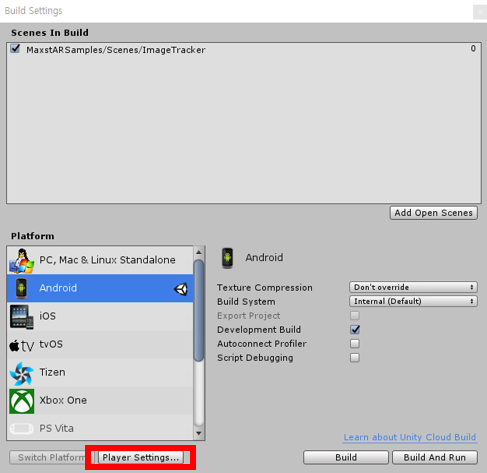
In Inspector window, enter the Identification.
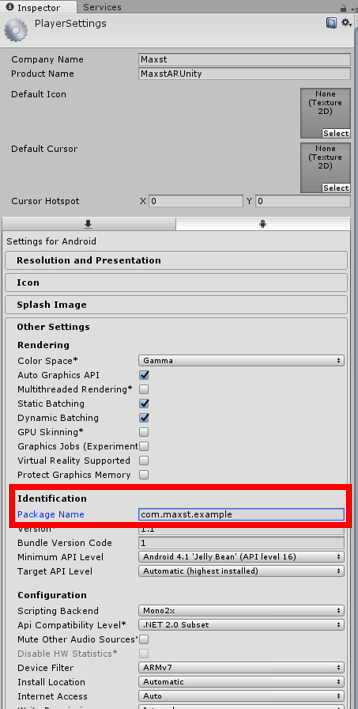
Click the ARCamera Prefabs in ImageTracker scene and click the configuration menu in Inspector view.
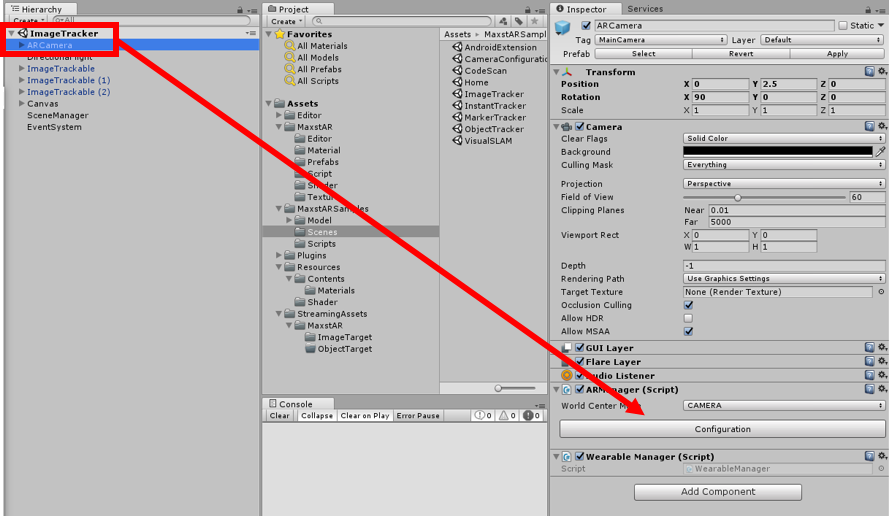
Select the Wearable Type to Optical See Through in configuration. Select 'None' to develop the Video See-Through display app.

Enter the license key. Please refer to License Manager for how to get the license key.
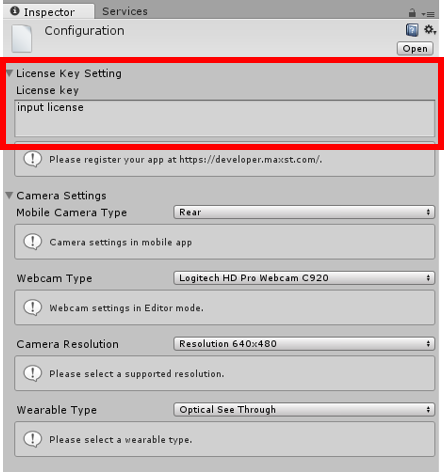
After connecting the device, select 'File > Build&Run'
4. Precautions
※ If the Android SDK is not properly configured, the file selection window of the message(Select Android SDK root folder) may appear. You can do this by choosing Edit> Preferences from the Unity Editor menu bar.
※ Since the BT-300 uses an x86 processor, building it with the default settings of Unity will not work properly. If you want to build a sample app on the BT-300, you must set the Device Filter to ARMv7 as follows:
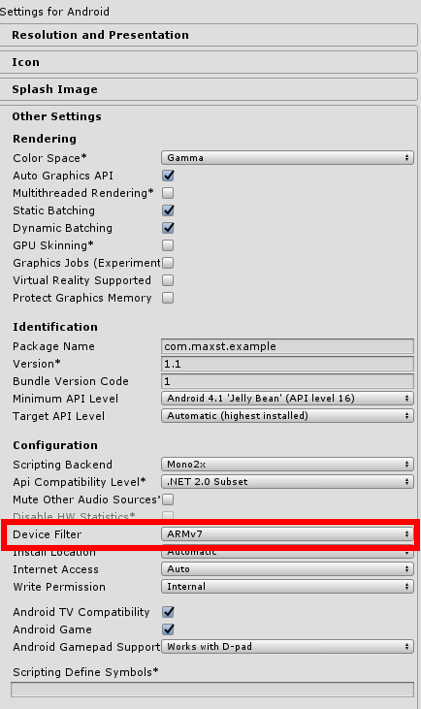
5. GitHub Unity Scene Example
GitHub Unity Scene Example: https://github.com/maxstdev/MaxstARSDK_Unity_Sample.git
- ExtraImageTrackerKnight
- ExtraImageTrackerMultiTarget
- ExtraInstantTrackerBrush
- ExtraInstantTrackerGrid
- ExtraInstantTrackerMultiContents
- ExtraVisualSLAMBrush
- ExtraVisualSLAMKnight



